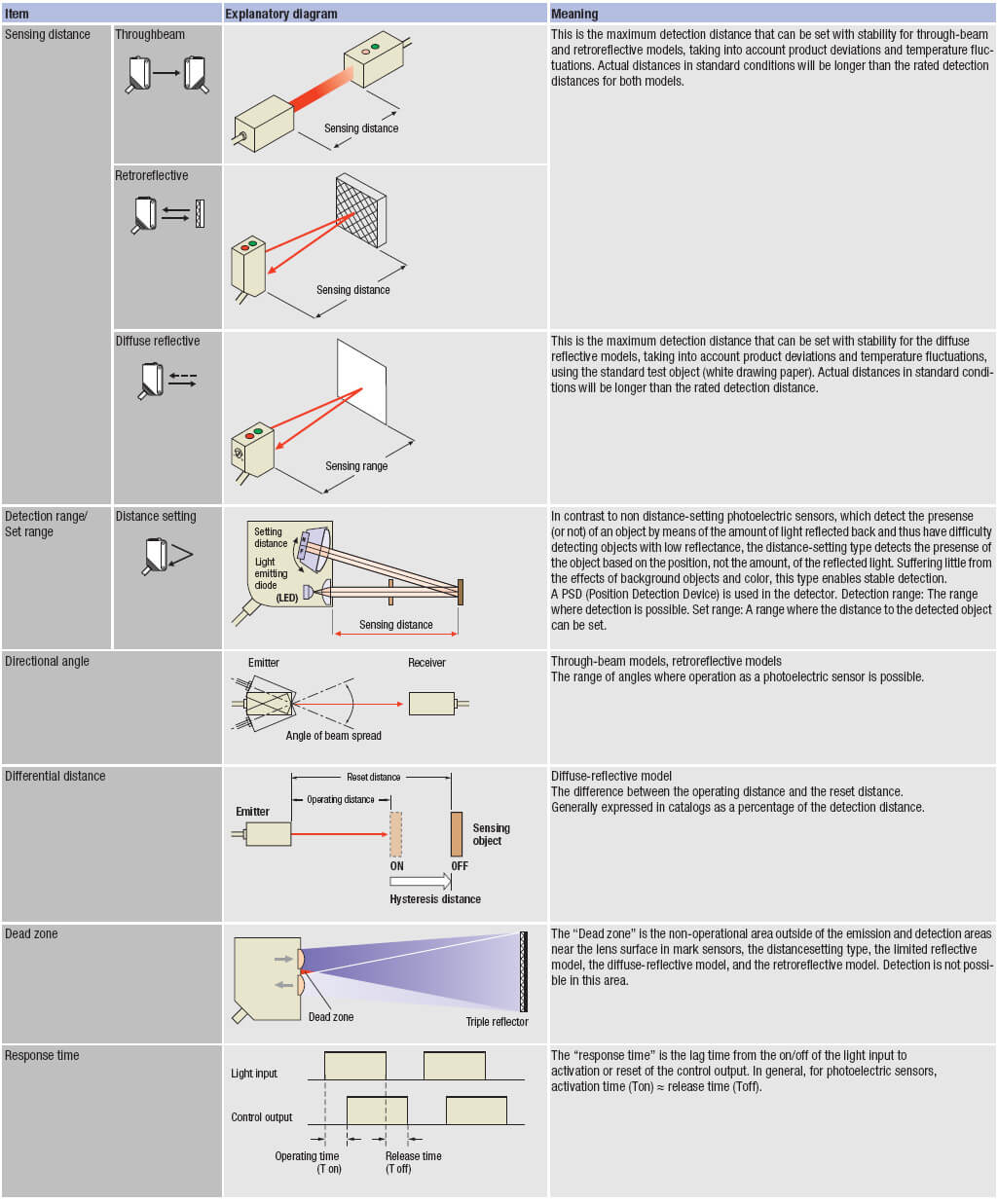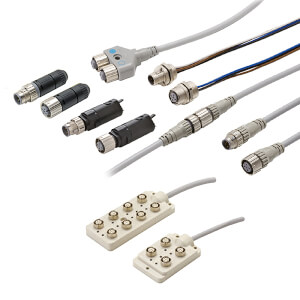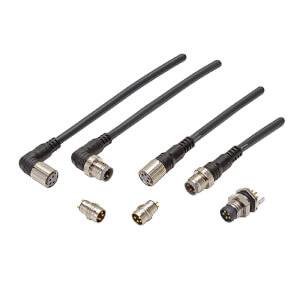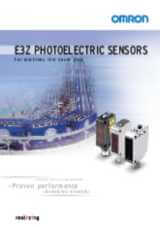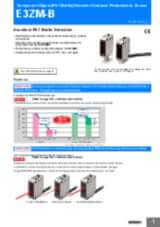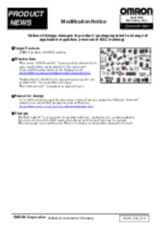
E3ZM-B
Transparent object detection sensor in compact stainless steel housing
The E3ZM-B family provides models for the general transparent material detection and specialized models providing highest stability for the detection of PET bottles.
- Stable PET detection using double refraction and AC³ power control technology
- Detergent resistant compact SUS316L housing
Specifications & ordering info
| Product | Shape | Sensing method | Sensing distance | Sensing distance (min.) | Setting method | Connection method | Cable length | Output type | Operation mode | Response time | Material housing | Thread size | Type of light | Power supply voltage | Features | Degree of protection (IP) | Description | |
|---|---|---|---|---|---|---|---|---|---|---|---|---|---|---|---|---|---|---|
|
|
Cuboid | Retro-reflective | 500 mm | 100 mm | Teach-In | Cable | 2 m | NPN | Dark-ON, Light-ON | 1 ms | Stainless steel | Other | Polarized red light | 10-30 V | M.S.R., Transparent detection (PET bottle and tray) | IP67/IP69K | Photoelectric sensor, rectangular housing, stainless steel, red LED, retro-reflective, transparent object, 500 mm, with teach-button, NPN, Light-ON/Dark-ON, 2 m cable |
|
|
|
Cuboid | Retro-reflective | 500 mm | 100 mm | Teach-In | Cable | 5 m | NPN | Dark-ON, Light-ON | 1 ms | Stainless steel | Other | Polarized red light | 10-30 V | M.S.R., Transparent detection (PET bottle and tray) | IP67/IP69K | Photoelectric sensor, rectangular housing, stainless steel, red LED, retro-reflective, transparent object, 500 mm, with teach-button, NPN, Light-ON/Dark-ON, 5 m cable |
|
|
|
Cuboid | Retro-reflective | 500 mm | 100 mm | Teach-In | Cable | 2 m | NPN | Dark-ON, Light-ON | 1 ms | Stainless steel | Other | Polarized red light | 10-30 V | M.S.R., Reflector E39-RP1 included, Transparent detection (PET bottle and tray) | IP67/IP69K | Photoelectric sensor, rectangular housing, stainless steel, red LED, retro-reflective, transparent object, 500 mm, with teach-button, reflector E39-RP1 included, NPN, Light-ON/Dark-ON, 2 m cable |
|
|
|
Cuboid | Retro-reflective | 500 mm | 100 mm | Teach-In | Cable | 5 m | NPN | Dark-ON, Light-ON | 1 ms | Stainless steel | Other | Polarized red light | 10-30 V | M.S.R., Reflector E39-RP1 included, Transparent detection (PET bottle and tray) | IP67/IP69K | Photoelectric sensor, rectangular housing, stainless steel, red LED, retro-reflective, transparent object, 500 mm, with teach-button, reflector E39-RP1 included, NPN, Light-ON/Dark-ON, 5 m cable |
|
|
|
Cuboid | Retro-reflective | 500 mm | 100 mm | Manual adjustment | Cable | 2 m | NPN | Dark-ON, Light-ON | 1 ms | Stainless steel | Other | Polarized red light | 10-30 V | M.S.R., Transparent detection (all media: glass, PET, foil) | IP67/IP69K | Photoelectric sensor, rectangular housing, stainless steel, red LED, retro-reflective, transparent object, 500 mm, with potentiometer, NPN, Light-ON/Dark-ON, 2 m cable |
|
|
|
Cuboid | Retro-reflective | 500 mm | 100 mm | Manual adjustment | Cable | 5 m | NPN | Dark-ON, Light-ON | 1 ms | Stainless steel | Other | Polarized red light | 10-30 V | M.S.R., Transparent detection (all media: glass, PET, foil) | IP67/IP69K | Photoelectric sensor, rectangular housing, stainless steel, red LED, retro-reflective, transparent object, 500 mm, with potentiometer, NPN, Light-ON/Dark-ON, 5 m cable |
|
|
|
Cuboid | Retro-reflective | 500 mm | 100 mm | Teach-In | Connector M8 - 4 pin | NPN | Dark-ON, Light-ON | 1 ms | Stainless steel | Other | Polarized red light | 10-30 V | M.S.R., Transparent detection (PET bottle and tray) | IP67/IP69K | Photoelectric sensor, rectangular housing, stainless steel, red LED, retro-reflective, transparent object, 500 mm, with teach-button, NPN, Light-ON/Dark-ON, M8 4-pin connector |
|
|
|
|
Cuboid | Retro-reflective | 500 mm | 100 mm | Teach-In | Connector M8 - 4 pin | NPN | Dark-ON, Light-ON | 1 ms | Stainless steel | Other | Polarized red light | 10-30 V | M.S.R., Reflector E39-RP1 included, Transparent detection (PET bottle and tray) | IP67/IP69K | Photoelectric sensor, rectangular housing, stainless steel, red LED, retro-reflective, transparent object, 500 mm, with teach-button, reflector E39-RP1 included, NPN, Light-ON/Dark-ON, M8 4-pin connector |
|
|
|
|
Cuboid | Retro-reflective | 500 mm | 100 mm | Manual adjustment | Connector M8 - 4 pin | NPN | Dark-ON, Light-ON | 1 ms | Stainless steel | Other | Polarized red light | 10-30 V | M.S.R., Transparent detection (all media: glass, PET, foil) | IP67/IP69K | Photoelectric sensor, rectangular housing, stainless steel, red LED, retro-reflective, transparent object, 500 mm, with potentiometer, NPN, Light-ON/Dark-ON, M8 4-pin connector |
|
|
|
|
Cuboid | Retro-reflective | 500 mm | 100 mm | Teach-In | Cable | 2 m | PNP | Dark-ON, Light-ON | 1 ms | Stainless steel | Other | Polarized red light | 10-30 V | M.S.R., Transparent detection (PET bottle and tray) | IP67/IP69K | Photoelectric sensor, rectangular housing, stainless steel, red LED, retro-reflective, transparent object, 500 mm, with teach-button, PNP, Light-ON/Dark-ON, 2 m cable |
|
|
|
Cuboid | Retro-reflective | 500 mm | 100 mm | Teach-In | Cable | 5 m | PNP | Dark-ON, Light-ON | 1 ms | Stainless steel | Other | Polarized red light | 10-30 V | M.S.R., Transparent detection (PET bottle and tray) | IP67/IP69K | Photoelectric sensor, rectangular housing, stainless steel, red LED, retro-reflective, transparent object, 500 mm, with teach-button, PNP, Light-ON/Dark-ON, 5 m cable |
|
|
|
Cuboid | Retro-reflective | 500 mm | 100 mm | Teach-In | Cable | 2 m | PNP | Dark-ON, Light-ON | 1 ms | Stainless steel | Other | Polarized red light | 10-30 V | M.S.R., Reflector E39-RP1 included, Transparent detection (PET bottle and tray) | IP67/IP69K | Photoelectric sensor, rectangular housing, stainless steel, red LED, retro-reflective, transparent object, 500 mm, with teach-button, reflector E39-RP1 included, PNP, Light-ON/Dark-ON, 2 m cable |
|
|
|
Cuboid | Retro-reflective | 500 mm | 100 mm | Teach-In | Cable | 5 m | PNP | Dark-ON, Light-ON | 1 ms | Stainless steel | Other | Polarized red light | 10-30 V | M.S.R., Reflector E39-RP1 included, Transparent detection (PET bottle and tray) | IP67/IP69K | Photoelectric sensor, rectangular housing, stainless steel, red LED, retro-reflective, transparent object, 500 mm, with teach-button, reflector E39-RP1 included, PNP, Light-ON/Dark-ON, 5 m cable |
|
|
|
Cuboid | Retro-reflective | 500 mm | 100 mm | Teach-In | M8 pigtail connector 4 pin | 0.3 m | PNP | Dark-ON, Light-ON | 1 ms | Stainless steel | Other | Polarized red light | 10-30 V | M.S.R., Transparent detection (PET bottle and tray) | IP67/IP69K | Photoelectric sensor, rectangular housing, stainless steel, red LED, retro-reflective, transparent object, 500 mm, with teach-button, PNP, Light-ON/Dark-ON, M8 stainless steel pigtail connector 4-pin, 0.3 m |
|
|
|
Cuboid | Retro-reflective | 500 mm | 100 mm | Manual adjustment | Cable | 2 m | PNP | Dark-ON, Light-ON | 1 ms | Stainless steel | Other | Polarized red light | 10-30 V | M.S.R., Transparent detection (all media: glass, PET, foil) | IP67/IP69K | Photoelectric sensor, rectangular housing, stainless steel, red LED, retro-reflective, transparent object, 500 mm, with potentiometer, PNP, Light-ON/Dark-ON, 2 m cable |
|
|
|
Cuboid | Retro-reflective | 500 mm | 100 mm | Manual adjustment | Cable | 5 m | PNP | Dark-ON, Light-ON | 1 ms | Stainless steel | Other | Polarized red light | 10-30 V | M.S.R., Transparent detection (all media: glass, PET, foil) | IP67/IP69K | Photoelectric sensor, rectangular housing, stainless steel, red LED, retro-reflective, transparent object, 500 mm, with potentiometer, PNP, Light-ON/Dark-ON, 5 m cable |
|
|
|
Cuboid | Retro-reflective | 500 mm | 100 mm | Manual adjustment | M12 pigtail connector | 0.3 m | PNP | Dark-ON, Light-ON | 1 ms | Stainless steel | Other | Polarized red light | 10-30 V | M.S.R., Transparent detection (all media: glass, PET, foil) | IP67/IP69K | Photoelectric sensor, rectangular housing, stainless steel, red LED, retro-reflective, transparent object, 500 mm, with potentiometer, PNP, Light-ON/Dark-ON, M12 stainless steel pigtail connector, 0.3 m |
|
|
|
Cuboid | Retro-reflective | 500 mm | 100 mm | Teach-In | Connector M8 - 4 pin | PNP | Dark-ON, Light-ON | 1 ms | Stainless steel | Other | Polarized red light | 10-30 V | M.S.R., Transparent detection (PET bottle and tray) | IP67/IP69K | Photoelectric sensor, rectangular housing, stainless steel, red LED, retro-reflective, transparent object, 500 mm, with teach-button, PNP, Light-ON/Dark-ON, M8 4-pin connector |
|
|
|
|
Cuboid | Retro-reflective | 500 mm | 100 mm | Teach-In | Connector M8 - 4 pin | PNP | Dark-ON, Light-ON | 1 ms | Stainless steel | Other | Polarized red light | 10-30 V | M.S.R., Reflector E39-RP1 included, Transparent detection (PET bottle and tray) | IP67/IP69K | Photoelectric sensor, rectangular housing, stainless steel, red LED, retro-reflective, transparent object, 500 mm, with teach-button, reflector E39-RP1 included, PNP, Light-ON/Dark-ON, M8 4-pin connector |
|
|
|
|
Cuboid | Retro-reflective | 500 mm | 100 mm | Manual adjustment | Connector M8 - 4 pin | PNP | Dark-ON, Light-ON | 1 ms | Stainless steel | Other | Polarized red light | 10-30 V | M.S.R., Transparent detection (all media: glass, PET, foil) | IP67/IP69K | Photoelectric sensor, rectangular housing, stainless steel, red LED, retro-reflective, transparent object, 500 mm, with potentiometer, PNP, Light-ON/Dark-ON, M8 4-pin connector |
|
Need assistance?
We’re here to help! Reach out, and our specialists will assist you in finding the best solution for your business.
Contact Our Experts E3ZM-B
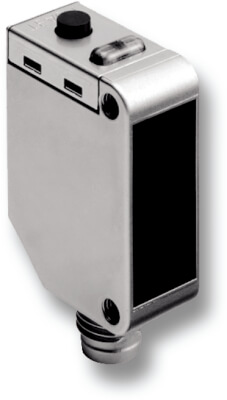
Thank you for submitting your request. We will come back to you as soon as possible.
We are experiencing technical difficulties. Your form submission has not been successful. Please accept our apologies and try again later. Details: [details]
DownloadQuotation for E3ZM-B
By completing this form you can request a quotation. Your personal details will be handled confidentially.

Thank you for requesting a quotation. We will provide you with the required information as soon as possible.
We are experiencing technical difficulties. Your form submission has not been successful. Please accept our apologies and try again later. Details: [details]
DownloadFeatures
One mounting
Enhanced stability
Conventional photoelectric sensors for detecting PET bottles depend on refraction and the attenuation of light intensity caused by surface reflection. However, it is difficult to attain a sufficient level of excess gain with these methods. The E3ZM-B PET optimised models utilise the birefringent (double refraction) property of PET bottles to significantly increase the level of excess gain. The polarization component that is disturbed by the PET bottles as they pass along the line is cut by a special and unique Omron polarization filter. This greatly lowers the intensity of the received light level and provides enhanced stability compared to conventional sensors.
Enhanced detection stability with E3ZM-B using the double refraction property
Conventional PET detection sensor
Reliability
The E3ZM-B PET optimised models use automatic light adjustment to compensate for soiling or temperature fluctuations. With conventional sensors, parameters may require resetting when the sensor or reflector becomes contaminated with dust or dirt. Temperature fluctuations may also lead to detection errors, as this can effect the performance of the LED. Original Omron light emission control technology greatly reduces the resetting work required.
IP69k
The IP69k test according to DIN 40 050 part 9 is intended to simulate high pressure / steam cleaning. During the test 14-16 l/min water at 80ºC is sprayed onto the sensor from different angles with 8000-10000 kPa. The sensor may not suffer any damaging effects from high pressure water in appearance and functionality.
Detergent resistance
The detergent resistant sensors are tested on alkaline and acid based detergents commonly used in the food industry. In comparison to conventional metal or plastic housing sensors, longer sensor lifetimes of 20 times or more can be achieved.
Performance comparison
Usable signal and noise
Issue 1: Increasing the difference between usable signal and noise
| The goal of any transparent sensor development is to increase the difference between usable signal and noise. |
And the operational stability of the sensor depends on how well the following factors are achieved:
|
Our solution:
At Omron we take several steps to increase the operational stability by maximising the difference between signal and noise:
- In design: circuit layouts, shielding, filtering technologies and material selection ensure a minimal background noise and highest environmental influence compensation.
- In technologies: in addition to using the retro reflective technology with standard polarisation technology, some materials e.g. PET have characteristics that additionally polarize light. This effect can be utilized further to enhance the difference between usable signal and noise.
- In production: production technologies that allow a minimal deviation from the desired target specification values ensure that the performance of a sensor evaluated at the design-in phase does not vary during mass machine production.
- In application: the selection of the fitting sensor in combination with choosing an appropriate mounting and parameter setting can further enhance the operational stability and/or detection accuracy.
Compensating for optical effects
Issue 2: Compensating for optical effects
As light travels through differing transparent materials (glass/PET) the following detection errors can occur:
- Lens-effect: transparent objects with convex shapes (e.g. shower gel bottles) can perform like a lens and allow too much light to be received by the sensor. This can result in a false reading that no object is present or it can cause a so-called double-triggering (2 signals for only one object).
- Total reflection: if the emitted light meets the surface of a transparent object at a certain angle, the light can be totally reflected instead of going through the transparent object. If the totally reflected beam hits the receiver, it can falsely result in a "no object" reading.
Our solution:
At Omron we use special coaxial optics for our higher value and application specific sensors. These special coaxial optical sensors reduce or completely eliminate the above described optical effects. Cylindrical sensors utilise the coaxial optics to prevent false signals caused by incorrect installation or turning sensors using conventional separate sender and receiver optics.
Process related requirements
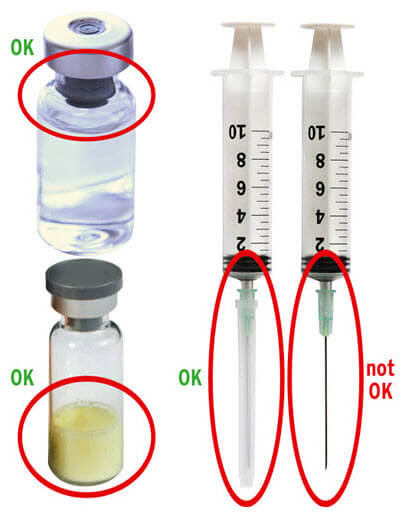
Issue 3: Process related requirements
In order to select the correct transparent detection sensor taking also machine and process related issues into consideration is very important:
- Minimal space between bottles
- Conveying speed of the bottles/containers
- Object size or shape (miniature objects, flat glass, etc)
- Limited mounting space or long distances
- Hot, wet or hygienic environments
- Detection of container and content at the same time (e.g. vial and plug, vial and lyo cake, glass syringe with or without protective cover,…)
Application examples detection of 2 states with one sensor:
- State 1: Transparent container + object present e.g. plug, lyo cake or syringe cover (OK state)
- State 2: Transparent container WITHOUT object (not OK state)
Our solution:
At Omron we have a global network of application engineers. Their technical knowledge and experience will assist you and your company in making the correct product selection to fit your organisation industrial automation requirements and needs. What can we do for you?
Solution portfolio
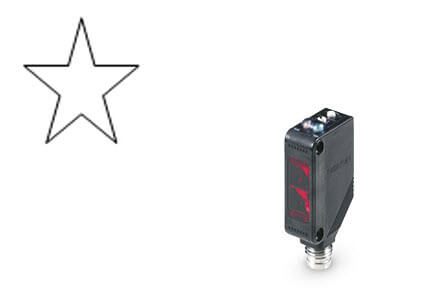
Best choice in value for money
E3Z-B:
- For standard applications
- All transparent objects
- Excellent value for money
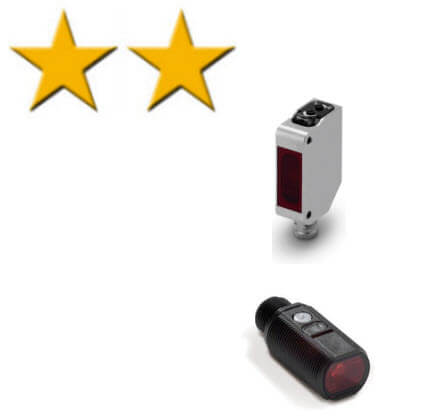
Best choice in reliability, flexibility, stability
E3ZM-BT:
- The "All-rounder"….stable detection of transparent objects in a wide range of applications
- All transparent objects
- Excellent chemical resistance
- The "M18 cylindrical brother" of E3ZM-BT
- Position independent detection due to co-axial optics
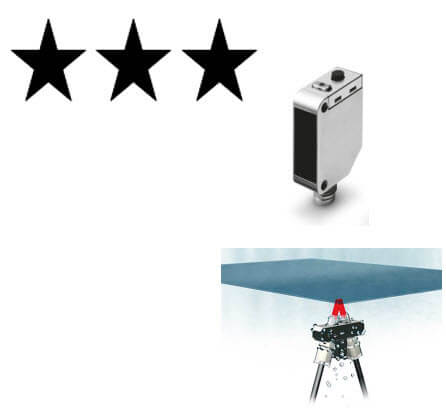
Best performance for dedicated applications
E3ZM-B:
- The "PET-Specialist"
- Advanced reliability due to special polarization and automatic threshold control
- Best detection performance for transparent film, flat glass in hot or wet environments or longest lifetime for frequently cleaned environments
Technical information
